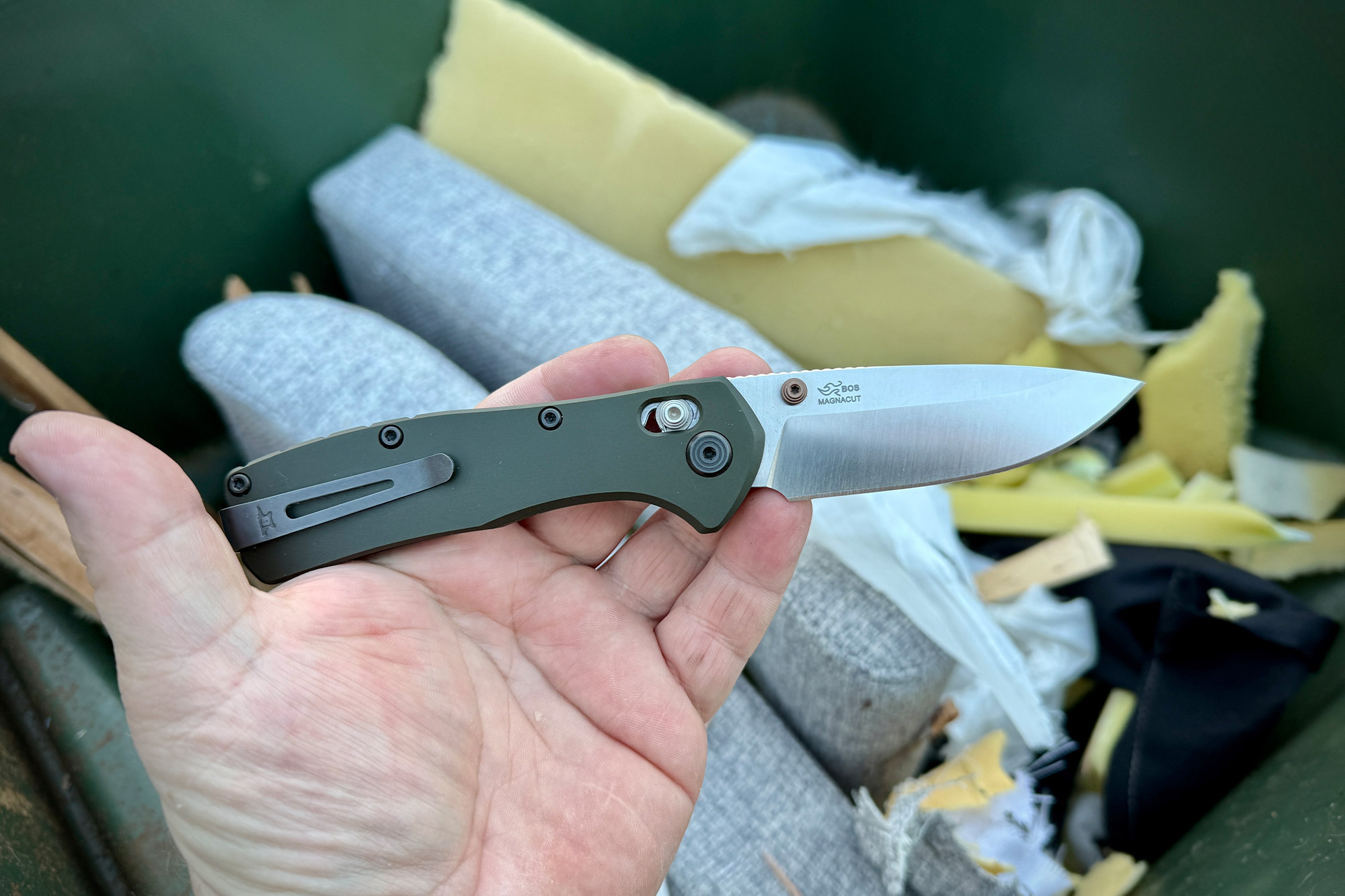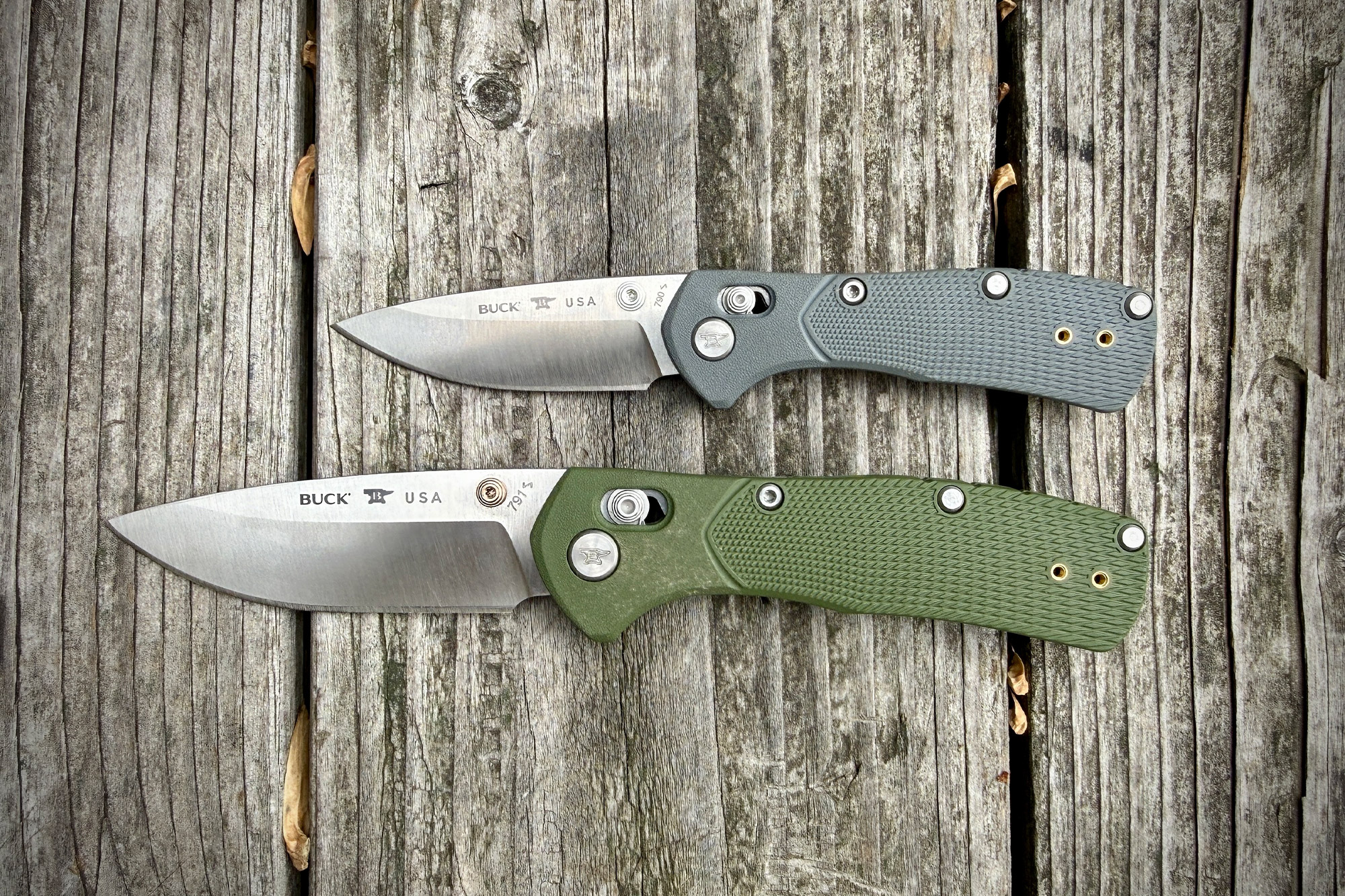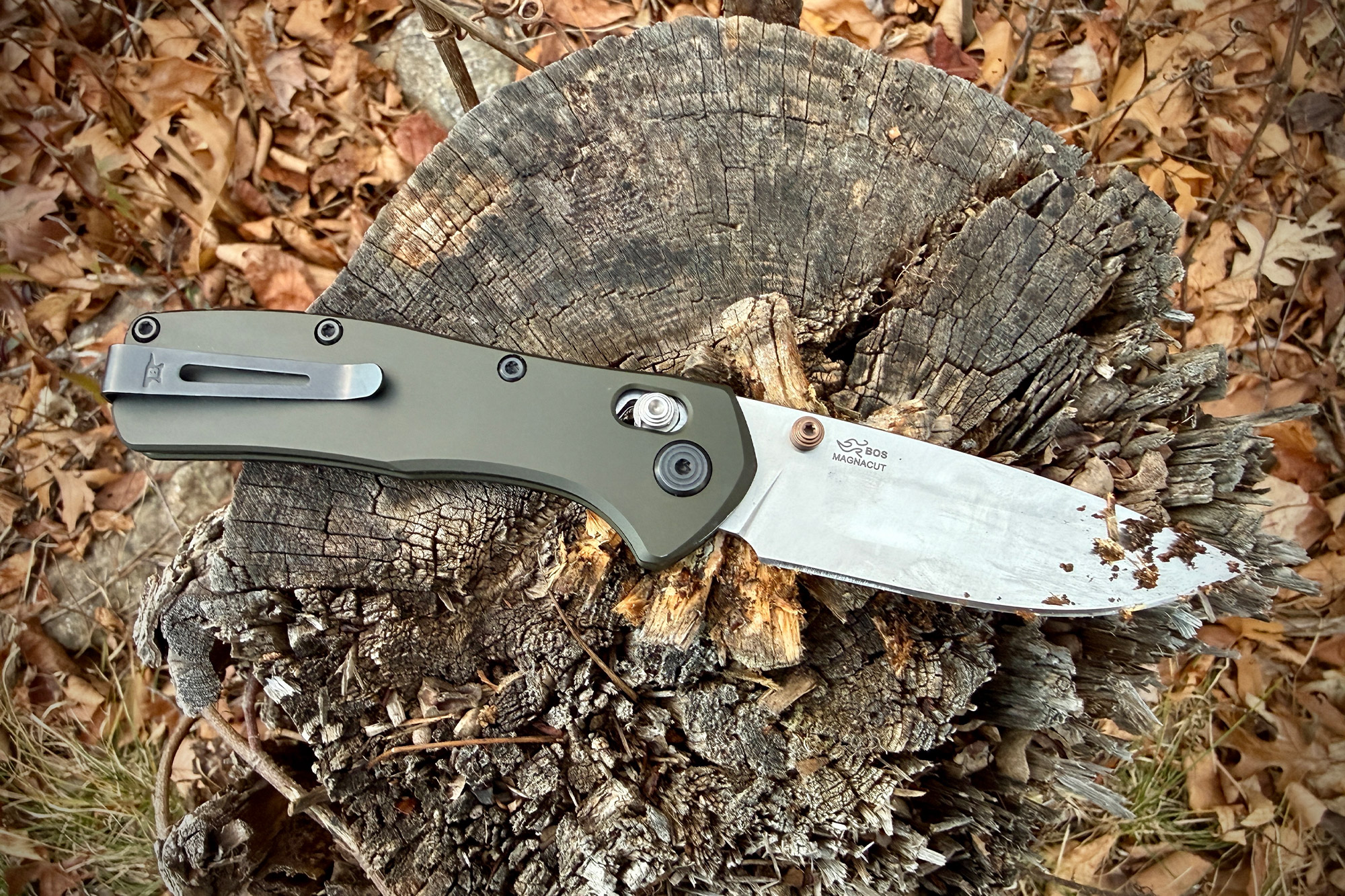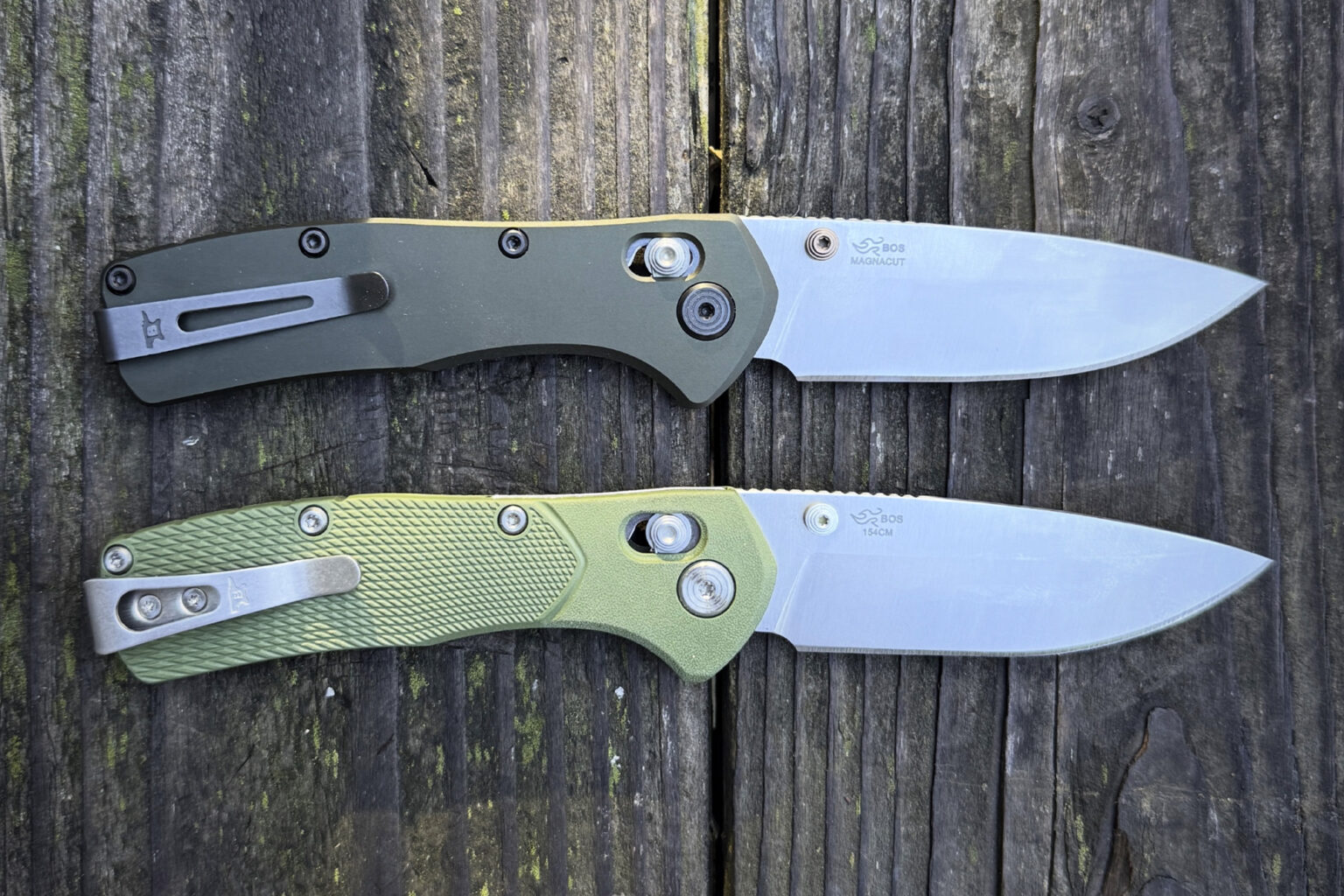For over a century, Buck Knives has been part of our heritage. From farmers working their fields, to soldiers fighting on the front lines, and folks like you and me wandering around in the woods, a Buck knife is part of those stories. However, as someone who writes about knives, this is the first time Buck has been part of a story I’ve written.
At the end of October, Buck sent me some knives from its new Range series. What’s significant about these knives is that it’s the first time Buck has used the crossbar lock on its American-made folders. The series is also significant because it represents the 21st century for Buck. When one of the longest-running American knife companies diverts from the norm and adds such a modern feature to its iconic knives, it’s worth paying attention.
From the last week of October to the week before Thanksgiving, I used and abused both a Buck Range Elite and a Range Pro. The differences between the two are in function and did not go unnoticed. I’ll cover those differences as well as my overall experience with these Buck blades. However, when it comes down to brass tacks, you can’t go wrong with either knife.
In short: The Range Series of Knives represents the first time Buck Knives has added a crossbar lock to any of its blades. Both the Elite ($220) and the Pro ($125) have the same size and shape, but use different materials. The Elite has a titanium-scaled grip and uses MagnaCut Steel. The Pro has a nylon grip and uses 154CM steel. Both are great knives for different uses.
Compare the Buck Knives Range Series Pro and Elite knives to those on GearJunkie’s guide to the Best Pocket Knives.
-
Size and balance is great for long periods of work -
MagnaCut Steel -
Incredible build quality for grunt work
-
$220 is a lot for a folding knife these days
-
Size and balance make it great for backpacking and hiking -
I still love 154CM. It’s slicy and precise -
Handles have incredible grip
-
Some people might not like the plastic feel of the handle scales
Buck Knives Range Series Review
Design & Features
Where the materials between the two knives differ, the size and shape of both the Range Pro and Range Elite are the same. So, this became a real apples-to-apples comparison during the testing period.
Both knives are 7.88 inches in total length and feature a 3.38-inch drop-point blade. Those blades deploy via a thumb stud and lock up securely with Buck’s version of the crossbar lock. Additionally, both knives feature deep-carry pocket clips, though they are not interchangeable.
For a frame and handles, the Pro has stainless steel liners and textured glass-filled nylon scales. These scales help keep the weight of the Pro below 3 ounces and are both gummy and grippy.
On the Elite, the frame is the same, but the scales are made from anodized aluminum. Although the aluminum brings the Elite to just over 3.5 ounces, the difference in build is more rugged.
Overall, the Elite feels and reacts on a heavy-duty use level, where the Pro is more aligned to medium duty, which is where most backpacking folders find themselves these days.
Most notably, there’s the difference in steel. The Elite uses the current knife blade superstar, MagnaCut. The Pro uses 154CM, which, prior to the advent of steels like MagnaCut, was a reigning champ in the EDC and outdoor knife worlds. MagnaCut is a superior steel in all three main areas: toughness, edge retention, and corrosion resistance (hence, the higher price point for the Elite).
Initial Reaction

Where I was excited to get both full-sized versions of the Range Series, I gravitated toward the Pro once I received and opened both boxes. I am by no means an ounce counter, but the grip and weight of the Pro instantly appealed to me. However, I could appreciate the obvious difference in build and quality with the Elite.
Either way, these Range knives are long and slender, with neither the blade nor the handle overpowering the other. Considering the blade’s size and drop-point shape, these knives are well-suited for cutting, piercing, shaving, and shaping with ease.
With MagnaCut being a superior steel, I’m certain that the Elite will prove to be the workhorse that requires less TLC in the end. Still, the Pro has quite a bit to be proud of. Where it might not be your top choice for a hard day’s work, it meets or exceeds the capabilities of all the other popular hiking and backpacking knives on the market.
In the Field

Out there in the thick of it, both knives certainly held their own. Where the Elite is more stubborn, the Pro proved to be more than capable. That said, while either one of them would be a welcome companion out on a hike, the Elite is the knife I would use for grunt work.
So, I did.
How grunty, you ask? How about breaking down a couch with it? My kids had an old love seat in their loft that I had to cut all of the fabric off of to dispose of properly. All of it was either glued or stapled to the frame — including this dense memory foam that the MagnaCut sailed through beautifully.
In the end, the Elite needed a solid resharpening, but the coating on the handle scales held up, and it functioned like new. As a celebratory award, I burned the frame in a big bonfire.
However, in the end, I still preferred the Pro. I liked carrying it on hikes and at night out in the woods (sleeping in my truck). The Pro punches above its weight class, in my opinion. I used it for both fire and food preparation. It proved to be that quintessential pocket knife we all strive to find when we head into our favorite camping store — virtually or in person.
The Mini Options

Rounding out the Range lineup, Buck also offers the Mini Range Elite ($210) and Mini Range Pro ($115). Like their bigger siblings, the Minis are the same size and shape. They also feature the same material and functions as their larger counterparts. They have a total length of 6.25 inches and feature a 2.63-inch blade.
For my liking, I find the Minis to be too small. However, they feature the same balance as the bigger knives. For someone looking for a small form factor EDC, these might be a better fit.
That being said, if you’re considering picking up the Mini Pro, I would recommend spending the extra $10 to get the full-sized version. I wouldn’t say the same about the Elite, as I believe that someone willing to spend over $200 on a smaller knife really wants that smaller knife.
Buck Knives Range Elite & Pro: In Conclusion

Although this is my first review of a Buck knife, I am no stranger to the brand. Growing up in a family of farmers, Bucks were commonplace over any other brand. However, that was more than 30 years ago, and a lot has changed.
Buck isn’t just about two-hand lock-back knives, and they haven’t been for a while. The Range series of knives represents the most modern, appealing, and effective folding knives in their catalog.
All in all, after 3 weeks of testing and carrying, I would point any one of you in the direction of either one of these knives. If you tell me you’re tending to horses out on the family farm, I’m going to recommend the Elite. If you’re heading for a weekend in the woods, I am going to recommend the Pro.
In the end, the choice is up to you. You can go with the Elite and be happy knowing you’ve got one heck of a knife that you can use and abuse ’til the cows come home. If you end up with the Pro, you’re going to be in a great spot, with $100 left in your wallet for snacks and beers.
If you’re looking for a modern folding knife and want to buy from a brand that’s part of the American legacy, look no further than these Buck Range Series knives.
Read the full article here





